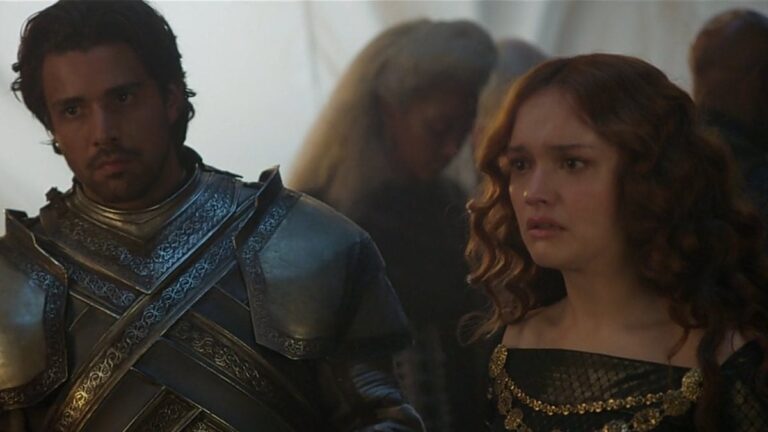
Watch the ever-changing cast of actors who bring the villainous Targaryen family and their allies to life in The House of Dragons
House of Dragons, a series that explores the Targaryen dynasty with the depth expected only from a Game of Thrones-related production, faces an unusual but fascinating narrative challenge: representing the course of several decades in just one season. Since its earliest chapters, the series has explored time jumps that required the visual evolution of its characters, leading to numerous and popular remakes.
A look at time jumps and their amazing effects
In the blink of an eye, we see the young Rhaenyra Targaryen, originally played by the vibrant Millie Alcock, transform into the more mature and calculating Emma D’Arcy. This change occurs between episodes five and six, just as Rhaenyra comes to terms with the complexities of her destiny as heir to the throne, facing political marriage and motherhood amid the chaos of the court.
At the same time, Alicent Hightower, played by Emily Carey, transforms from being Rhaenyra’s young friend to the queen’s partner, hardened by years and frustration, played by Olivia Cooke. This change not only involves the passage of time, but also increases the tension between Alicent and Rhaenyra, the central axis of the series’ drama.
The challenges of repeating the characters beyond aging
The art of recasting actors is not only to age the characters, but also to adapt their emotional and physical evolution to new situations with actors who can capture the essence of these changes. For example, Aemund Targaryen, originally a tormented boy played by Leo Ashton, is in Ewan Mitchell’s skin as a tough and vengeful teenager who has mastered the dragon Vagar and is growing in strength and power in the dance.
Each recasting brings with it the challenge of maintaining the character’s emotional and psychological continuity, which can often confuse viewers. However, Dragon House handled these changes in a way that allowed the audience to follow the plot without getting lost in the confusion of the changes.
Reshoots in Dragon House are not only narratively important because of the time jumps, but also an opportunity to explore the psychology of the characters as they age and change. This approach has proven to be a vital part of the series’ development, allowing for further exploration of the legendary world of Westeros.
The main characters of the series
To complement and enrich the analysis of the effects of reshoots on Dragon House, we can examine the fundamental importance of the actors and how their performances are crucial to the continuity and coherence of the series.
Despite the physical changes made by the time jumps in The Dragon House, the talent and acting skills of the actors are essential to maintain the essence of the characters. The series relies heavily on the physical appearance of the actors to project the emotional and historical complexity of their roles. This emotional connection is crucial for the audience to maintain interest and sympathy for the characters throughout the series.
The performances of Matt Smith (Prince Daemon Targaryen) and Paddy Considine (King Viserys Targaryen) are not only memorable, but add depth and care to the narrative, making each episode a rich and immersive experience. Smith’s ability to play the demon with a mixture of ferocity and vulnerability is particularly impressive, while Considine captures the languor and glory of the fallen king with great emotion.
These performances not only contribute to the drama and tension of the series, but also ensure its success and emotional appeal among viewers, proving that the strength of acting in the Game of Thrones universe is just as important as the story.

